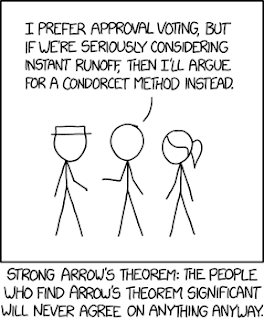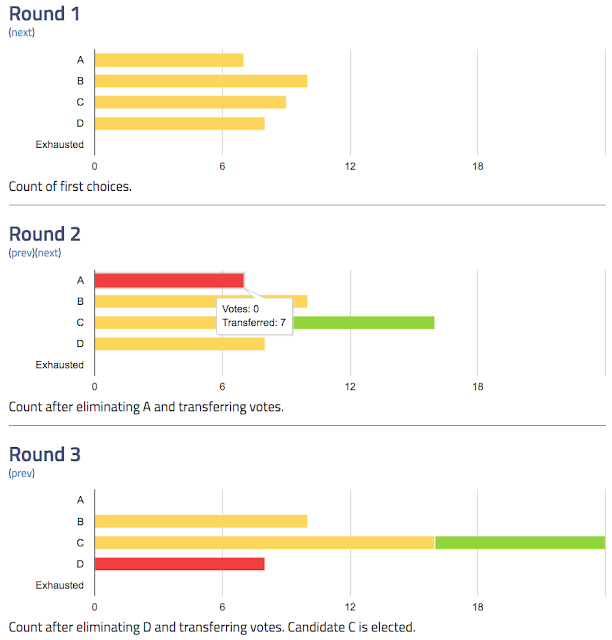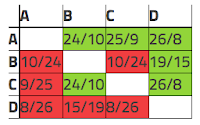The U.S. political system is broken. Voters all over the spectrum agree. The brands of both major parties are in the toilet. Trump speaks for himself. Hillary is widely disliked even by members of her own party and lost to the most incompetent and embarrassing candidate for President in history (oops, I guess I just spoke for Trump).
Why is the brand of our only two viable parties in the toilet? Because they don't represent most of us.
The 2016 Presidential election clearly showed that the two parties do not truly represent us. Democratic voters were divisively split between the Bernie camp and the Hillary camp. Republican voters were so fractured that it is hard to identify all the factions, but we have establishment Republicans, Trump supporters, libertarians, evangelicals, and whatever it is that Ted Cruz represents (people that no one likes?).
Given that we can easily identify 7 or so groups of American voters, why is that the 435 voting members of Congress come from only two parties? Sure, the people elected to Congress do vary along the conservative to liberal scale, but first and foremost, the party controls. So many votes are party line. Almost every issue is Democrat vs. Republican with very little independent thought.
As an example of unrepresented people, let's take Trump supporters. For simplicity, I'll describe them as rural, white, working class people from communities where jobs are disappearing. In my view, both parties have paid scant attention to this group despite the fact that this group needs help -- their jobs are disappearing. I'll greatly oversimplify, but Republicans focus on lowering taxes and deregulation while Democrats focus on the middle class and gay and civil rights. None of these things help Trump supporters. Although Trump doesn't appear to be doing anything for his supporters, he directly and clearly spoke to them during the campaign and said he would help them.
With that long-winded intro, I'll now explain how we break free from the two-party system.
Kick the Parties out of the Primary
In most states, we have a Democratic primary election to choose a Democratic candidate, a Republican primary election to choose a Republican candidate, and a general election to choose between the Democrat and the Republican.
Although third-party candidates will often enter the fray, they only do so in the general election. At this stage, voters don't vote for a third-party candidate because they are afraid to elect their least-favorite candidate. For example, a Libertarian will vote for a Republican to make sure the Democrat can't win.
Instead, we could have what is called a
top-two primary where
all candidates compete together in a first round, and the top-two candidates then compete in a second round to determine the winner. It is possible that the second round has two candidates from the same party!
Why is this better? Consider what happened in France this year where they use a top-two primary.
Emmanuel Macron won the Presidency of France for the centrist En Marche party. What is amazing is that this party
did not exist a year before. He created a party, and a year later he won the Presidency under that party. This is what happens when parties don't control primary elections. A brand new party has a chance to compete and win the Presidency.
Let's also look at the 2017 French Parliament elections, which also use a top-two primary. The En March party,
which did not exist a year before, won 53% of the seats of the national parliament.
Americans would be well served by a centrist party, but we can't do that because the two parties control the primaries.
Instant runoff voting would also be helpful here, but I don't think it is enough. The primaries for the two major parties dominate the news cycle and third-party and independent candidate can't get any attention. Having all candidates compete together would help place all candidates on a level playing field.
Give People More Choices for Congress
Members of Congress are elected from single-member voting districts. This is called a "winner-take-all" system because the people who didn't vote for the winner (which could be more than half of the people) don't get any representation at all.
Let's use Massachusetts as an example, which has 9 members of Congress and 9 single-member districts. Here is the registration of Massachusetts voters:
- 1,526,870 Democrat (34%)
- 479,237 Republican (11%)
- 2,480,742 unaffiliated or other parties (55%)
Although Democrats make up only 34% of voters, all 9 members of Congress are Democrats. Even worse, the last time Massachusetts elected a non-Democrat to Congress was 1997. A huge chunk of Massachusetts voters have been completely unrepresented for 20 years.
The reason it is called a winner-take-all system is that the losers get nothing, no representation.
The solution is to use multi-member districts. Instead of 9 single-member districts, Massachusetts could have 3 districts that each elect 3 members. Under this scenario, the 3 districts would each be three times as large and have 3 times as many voters. Each voter could get one vote or could submit a ranked vote with the
single transferable vote.
With multi-member districts, the elected candidates are more likely to represent the diverse views of the voters. For example, a 3-member district might elect 2 Democrats and 1 Republican. A 3-member district is also more likely to elect independents or third-party candidates. The key is that since multiple people are elected from the district, the multiple people are more likely to represent the views of the different voters in the district.
Why is it that we have single-member districts in the first place? I think there are two main reasons. First, the major parties like single-member districts because it gives them unfair advantage and allows them to suppress the other party and third parties. Second, there is an outdated notion that it is important to be geographically close to the person who represents you. Back in the days of horse and buggy, this made some sense. Nowadays, it is silly and they spend all of their time in Washington D.C. anyway.
These are my proposed solutions for changing our political system to give us a better chance of electing politicians who actually represent us. You may have a different view of the best way to do this and I'd love to hear your thoughts in the comments. The key is that we have to do something!












